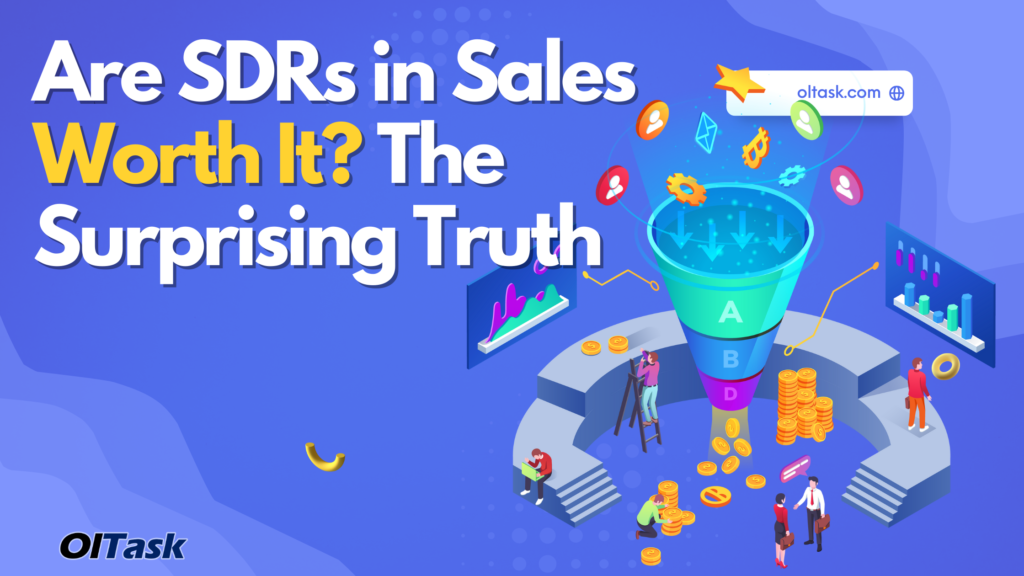In the world of modern sales, understanding the role of an SDR in sales is crucial for businesses aiming to scale their operations effectively. A Sales Development Representative (SDR) plays a pivotal role in generating leads and driving revenue growth. As the bridge between marketing and sales teams, SDRs are responsible for identifying potential customers, nurturing relationships, and setting the stage for successful sales conversions.
For many organizations, especially those in tech-driven industries, SDRs have become indispensable. They focus on outbound prospecting, ensuring that the sales pipeline remains robust and healthy. This role is not just about making cold calls; it involves strategic planning, leveraging data insights, and employing cutting-edge tools to engage prospects meaningfully.
As we delve deeper into this article, you'll gain a comprehensive understanding of what an SDR does, why their role matters, and how they contribute to a company's bottom line. Whether you're a budding sales professional or a seasoned executive, this guide will equip you with the knowledge you need to harness the power of SDRs in your sales strategy.
Read also:Anjali Arora Mms Viral Video Unveiling The Truth And Facts
Table of Contents
- Introduction to SDR in Sales
- The Role of an SDR in Sales
- Key Skills Required for SDR Success
- Difference Between SDR and Other Sales Roles
- The SDR Process: Step-by-Step Guide
- Tools and Technologies for SDRs
- Metrics to Measure SDR Performance
- Common Challenges Faced by SDRs
- The Future of SDRs in Sales
- Conclusion
Introduction to SDR in Sales
Understanding the concept of "what is an SDR in sales" begins with recognizing the evolving landscape of modern sales. Sales Development Representatives (SDRs) are front-line professionals tasked with building and nurturing relationships with potential customers. Their primary objective is to identify qualified leads and pass them on to account executives for closing deals. This process ensures that sales teams can focus on high-value activities, such as negotiations and closing, while SDRs handle the groundwork.
In today's competitive market, companies rely heavily on SDRs to drive lead generation and expand their customer base. By employing data-driven strategies, SDRs can pinpoint the most promising prospects and tailor their outreach efforts accordingly. This targeted approach not only improves conversion rates but also enhances the overall efficiency of the sales process.
The Role of an SDR in Sales
Lead Generation
At the heart of an SDR's responsibilities lies lead generation. SDRs utilize various channels, including phone calls, emails, and social media, to connect with potential customers. By employing a mix of outbound and inbound strategies, they ensure a steady flow of qualified leads into the sales pipeline.
Qualifying Leads
Once leads are identified, SDRs evaluate them based on specific criteria to determine their suitability for further engagement. This qualification process involves assessing factors such as company size, industry, budget, and decision-making authority. By focusing on high-potential leads, SDRs help streamline the sales process and improve conversion rates.
Setting Appointments
Another critical responsibility of SDRs is setting appointments for account executives. By scheduling demos, presentations, or meetings, SDRs facilitate the transition from prospecting to closing. This handoff ensures a seamless customer journey and increases the likelihood of successful sales outcomes.
Key Skills Required for SDR Success
To excel as an SDR in sales, professionals must possess a diverse skill set that combines technical expertise with interpersonal abilities. Below are some essential skills that contribute to SDR success:
Read also:Yololary A Comprehensive Guide To The Rising Star In The Digital World
- Communication Skills: Effective communication is paramount for SDRs, as they must articulate value propositions clearly and persuasively.
- Prospecting Skills: SDRs need to be adept at identifying and reaching out to potential customers through various channels.
- Data Analysis: Analyzing customer data helps SDRs make informed decisions and tailor their approach to each prospect.
- Time Management: Managing a high volume of leads requires strong organizational skills and the ability to prioritize tasks effectively.
Difference Between SDR and Other Sales Roles
While SDRs share some similarities with other sales roles, their responsibilities and objectives differ significantly. Unlike account executives, who focus on closing deals, SDRs concentrate on lead generation and qualification. Similarly, SDRs differ from business development representatives (BDRs), who often target larger accounts and focus on strategic partnerships.
Key Differences
- SDRs focus on outbound prospecting, while account executives handle inbound leads.
- SDRs are responsible for setting appointments, whereas account executives negotiate and close deals.
- SDRs typically work with a higher volume of leads compared to other sales roles.
The SDR Process: Step-by-Step Guide
Step 1: Lead Identification
SDRs begin by identifying potential customers using tools such as LinkedIn, CRM platforms, and data enrichment services. By leveraging these resources, they can build a comprehensive list of prospects tailored to their target market.
Step 2: Outreach and Engagement
Once leads are identified, SDRs initiate contact through personalized outreach efforts. This may include sending tailored emails, making phone calls, or engaging prospects on social media platforms. The goal is to capture the attention of potential customers and spark their interest in the product or service.
Step 3: Lead Qualification
After establishing initial contact, SDRs assess the viability of each lead by gathering relevant information. This qualification process ensures that only the most promising prospects are passed on to account executives for further engagement.
Tools and Technologies for SDRs
To maximize their effectiveness, SDRs rely on a variety of tools and technologies. These resources enhance their ability to identify, engage, and qualify leads efficiently. Some popular tools include:
- CRM Platforms: Tools like Salesforce and HubSpot help SDRs manage customer data and track interactions.
- Prospecting Tools: Platforms such as LinkedIn Sales Navigator and ZoomInfo enable SDRs to discover and connect with potential customers.
- Automation Software: Solutions like Outreach and Yesware streamline outreach efforts by automating repetitive tasks.
Metrics to Measure SDR Performance
Evaluating the performance of SDRs requires a focus on key metrics that align with their responsibilities. Below are some essential metrics for measuring SDR success:
- Lead Volume: The number of qualified leads generated by an SDR within a specific timeframe.
- Appointment Rate: The percentage of leads that result in scheduled meetings or demos.
- Conversion Rate: The proportion of leads that ultimately convert into paying customers.
Common Challenges Faced by SDRs
Despite their critical role in the sales process, SDRs encounter various challenges that can hinder their effectiveness. Some common obstacles include:
- Resistance from Prospects: Many prospects are hesitant to engage with SDRs, often viewing their outreach efforts as intrusive.
- Data Accuracy: Inaccurate or outdated customer data can impede SDRs' ability to connect with the right prospects.
- Burnout: The high-pressure nature of the job can lead to burnout if SDRs are not adequately supported and motivated.
The Future of SDRs in Sales
As technology continues to evolve, the role of SDRs in sales is likely to transform significantly. Advances in artificial intelligence, machine learning, and automation will enhance SDRs' capabilities, enabling them to work more efficiently and effectively. Additionally, the growing emphasis on data-driven decision-making will further solidify the importance of SDRs in driving business growth.
Conclusion
In conclusion, understanding "what is an SDR in sales" is essential for businesses seeking to optimize their sales processes. By leveraging the skills and expertise of Sales Development Representatives, companies can generate high-quality leads, improve conversion rates, and achieve sustainable growth. As the sales landscape continues to evolve, SDRs will remain a vital component of any successful sales strategy.
We invite you to share your thoughts and experiences with SDRs in the comments below. Additionally, feel free to explore other articles on our site for more insights into the world of sales and marketing. Together, let's drive the future of business forward!
For further reading and research, consider the following sources:


